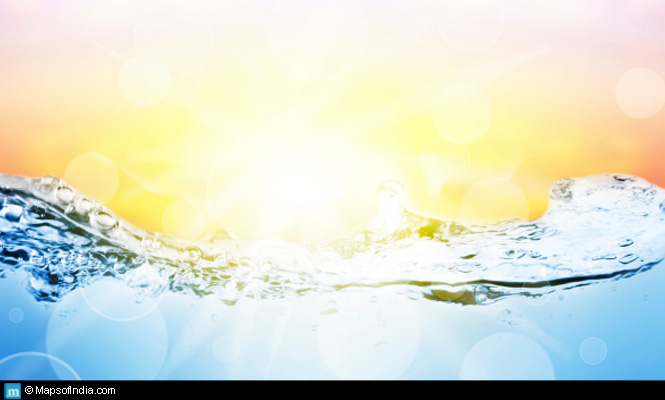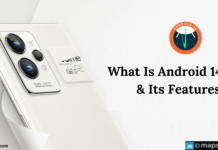 Increasing demand and shortage of drinking water resources due to the rapid development of industrialization and population growth have become a global issue. In contaminated areas, drinking water might contain metal pollutants at levels quite double international safety standards. Around 70 per cent of the population of India depends on water, which is exposed to differing types of pollution, from agro-chemical residues to metals from animal skin tanneries and others.
Increasing demand and shortage of drinking water resources due to the rapid development of industrialization and population growth have become a global issue. In contaminated areas, drinking water might contain metal pollutants at levels quite double international safety standards. Around 70 per cent of the population of India depends on water, which is exposed to differing types of pollution, from agro-chemical residues to metals from animal skin tanneries and others.
As per the World Health Organization (WHO) report of 2007, around 1.1 billion people lack access to improved drinking water supply, 88 percent of the four billion annual cases of diarrhoea are attributed to unsafe water and inadequate sanitation and hygiene, and 1.8 million people die from diarrhoea every year. The WHO also estimates that 94 percent of these diarrhoeal cases are preventable through modifications to the environment, including access to safe water.
Low-cost treatment technology
In recent years, photocatalytic method has shown an excellent potential as a low-cost, environment-friendly and sustainable water treatment technology. The power of this advanced chemical reaction technology has been widely demonstrated to get rid of persistent organic compounds and microorganisms in water. At present, the most technical barriers that impede its commercialization remained on the post-recovery of the catalyst particles after treatment.
However, one particularly sustainable possibility for securing the quality of drinking water as well as for protecting water bodies against excessive contamination is to use photocatalysts, which oxidize organic and inorganic impurities in the low concentration range to form the corresponding mineral salts. Hybrid water treatment with photocatalytically treated filters and screens are becoming increasingly important especially in the reduction of pharmaceutical residues, bacteria and trace substances.
This technology also uses the ultraviolet (UV) rays from the sunlight to detoxify contaminated water at high speeds, making safe and drinkable water. This innovative breakthrough was disclosed by Panasonic in Tokyo at Eco-Products 2014.
How the technology works?
When photocatalysts are exposed to UV light, the reactive oxygen that is formed purifies the toxic substances. However, titanium dioxide (TiO2 ), a kind of photocatalyst, comes in extremely fine particles and is troublesome to collect once dispersed in water. Therefore, methods of binding (TiO2) to larger matter have hence been used.
When these novel photocatalytic particles are agitated, TiO2 is released from the zeolite and dispersed throughout the water. As a result, reaction speed is markedly elevated compared to conventional methods of fixing TiO2 on a surface of substrates, enabling a large volume of water to be processed in a short amount of time. Leaving the water still will cause TiO2 to bind to zeolite again, making it easy to separate and recover the photocatalysts from the water – allowing them to be reused at a later time.
Technical constraints
In order to promote the feasibility of photocatalytic water treatment technology, several key technical constraints ranging from catalyst development to reactor design and process optimization have to be addressed. These are:
- Catalyst improvement for a high photo-efficiency that can utilize wider solar spectra;
- Catalyst immobilization strategy to provide a cost-effective solid eliquid separation;
- Improvement in the photocatalytic operation for wider pH range and to minimize the addition of oxidant additives;
- New integrated or coupling system for enhanced photo mineralization or photo-disinfection kinetics and effective design of photocatalytic reactor system or parabolic solar collector for higher utilization of solar energy to reduce the electricity costs.
Currently, the utilization of solar energy is limited by the photo-efficiency of the TiO2 catalyst band gap to only five per cent of the solar spectrum. The need for continuous illumination for efficient inactivation of pathogens has diverted solar utilization to artificial UV lamp driven process. In addition, the low efficacy design of current solar collecting technology (0.04 per cent capture of original solar photons) has encouraged the developmental progress of photocatalytic technology in water treatment industry.
Challenges and prospects
The photocatalytic technology using either UV light or sunlight has become more prominent owing to its advantages of the use of vast additive chemicals or disinfectants and its mineralization aspects. These are particularly important, as recalcitrant organics are mineralized rather than being transformed to another phase.
Coupled with the ambient operation of the process, all these make photocatalytic water treatment technology a viable alternative for commercialisation in the near future. Different water contaminants, ranging from hazardous contaminants of pesticides, herbicides and detergents to pathogens, viruses, coli forms and spores are effectively removed by this photocatalytic process.
Further pilot plant investigations with different reactor configurations are needed to ensure that the photocatalytic water technology is well-established and presents vast techno-economic data for any LCA study. Finally, a large-scale photocatalytic treatment process with high efficacy, solar-driven and low site area requirements can be realized in the near future with rapid evaluation of different possible pilot plant configurations.
Studies are on to lower the costs and maintenance necessities of the water purification system. The new technology holds the prospects of the method being made available across India and other developing countries. In fact, Panasonic is working with a number of institutions in India to test the product and its capabilities.



